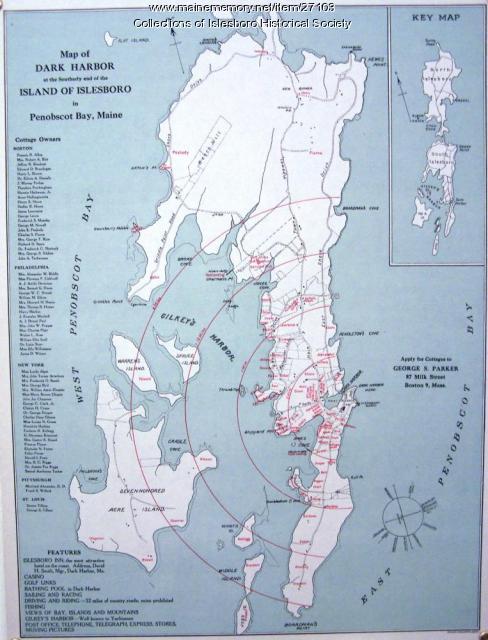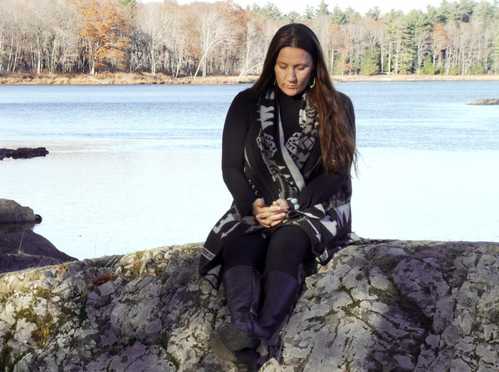Keywords: Land developers
Item 27103
Dark Harbor Cottages Poster, Islesboro, ca. 1900
Contributed by: Islesboro Historical Society Date: circa 1900 Location: Islesboro Media: Ink on paper
Item 11775
Trelawny Black Point Deed, 1631
Contributed by: Maine Historical Society Date: 1631 Location: Scarborough Media: Ink on vellum
Item 87375
Hedman property, Hedman Land, Long Island, Portland, 1924
Owner in 1924: Erik Hedman Use: Barn
Item 87376
Hedman property, Hedman Land, Long Island, Portland, 1924
Owner in 1924: Erik Hedman Use: Hen House
Item 150865
Silver Lake section of Summer Haven, Augusta, 1927
Contributed by: Maine Historical Society Date: 1927 Location: Augusta Client: Recreation Land Co. Architect: E. F. Pooler
Item 150256
Tower shopping complex, Bangor, ca. 1975
Contributed by: Maine Historical Society Date: circa 1975 Location: Bangor Client: Development Associates Trust Architect: Eaton W. Tarbell
Exhibit
Land Claims, Economic Opportunities?
The landmark 1980 Maine Indian Land Claims Settlement Act provided $81.6 million to Maine Indians for economic development, land purchase and other purposes. The money and increased land holdings, however, have not solved economic and employment issues for Maine Indians.
Exhibit
Sylvan Site: A Model Development
Frederick Wheeler Hinckley, a Portland lawyer and politician, had grand visions of a 200-home development when he began the Sylvan Site in South Portland in 1917. The stock market crash in 1929 put a halt to his plans, but by then he had built 37, no two of which were alike.
Site Page
"… in a Settler State? Settler Colonialism and the Development of Canada, 1820-67” in Julien Maudit and Jennifer Tunnicliffe, eds., Constant Struggle…"
Site Page
Scarborough: They Called It Owascoag - Scarborough Marsh: "Land of Much Grass" - Page 1 of 4
"Thus began the growth and development of the marsh we know today. The Scarborough Marsh is a very valuable, rich ecosystem."
Story
A New Beginning for Wabanaki Land Relationships
by John Banks
Wabanaki leadership in land stewardship
Story
Passamaquoddy Maple, reaching back to our ancestral roots
by Marie Harnois
Tribally owned Passamaquoddy Maple is an economic and cultural heritage opportunity
Lesson Plan
Nation to Nation: Treaties and Legislation between the Wabanaki Nations and the State of Maine
Grade Level: 9-12
Content Area: Social Studies
This lesson plan asks high school students to think critically about and look closely at documentation regarding the Nation-to-Nation relationship between the Wabanaki Tribes/Nations and the State of Maine. This lesson asks students to participate in discussions about morality and legislative actions over time. Students will gain experience examining and responding to primary and secondary sources by taking a close look at documents relating to the Maine Indian Claims Settlement Act of 1980 (MICSA) and the issues that preceded and have followed the Act.
Lesson Plan
Wabanaki Studies: Stewarding Natural Resources
Grade Level: 3-5
Content Area: Science & Engineering, Social Studies
This lesson plan will introduce elementary-grade students to the concepts and importance of Traditional Ecological Knowledge (TEK) and Indigenous Knowledge (IK), taught and understood through oral history to generations of Wabanaki people. Students will engage in discussions about how humans can be stewards of the local ecosystem, and how non-Native Maine citizens can listen to, learn from, and amplify the voices of Wabanaki neighbors to assist in the future of a sustainable environment. Students will learn about Wabanaki artists, teachers, and leaders from the past and present to help contextualize the concepts and ideas in this lesson, and learn about how Wabanaki youth are carrying tradition forward into the future.





















